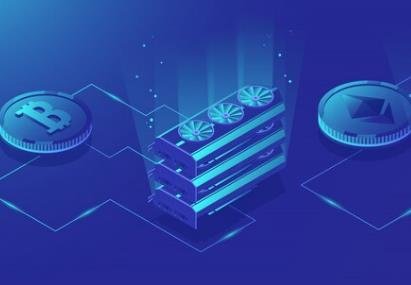Ripple Labs is taking bold steps in redefining financial systems through blockchain technology. The company’s latest advancements promise to reshape cross-border payments, transparency, and sustainability in ways that could have far-reaching effects on the global economy.
Revolutionizing Payments with RippleNet 2.0
At the heart of Ripple’s innovation is RippleNet 2.0, a cutting-edge platform designed to address inefficiencies in cross-border payments.
This platform achieves near-instant settlement for international transactions, a significant improvement from traditional methods that can take days. The reduced processing times are complemented by lower operational costs, benefitting banks, businesses, and individuals alike. By addressing these challenges, RippleNet 2.0 is poised to unlock financial opportunities in underserved markets.
The implications go beyond mere efficiency. Faster and cheaper transactions can empower small businesses, facilitate remittances, and even enable new types of financial interactions previously constrained by cost or complexity.

Transparency and Security: The Smart Contract Advantage
Ripple is also venturing into the realm of smart contracts, a move that could redefine how agreements and transactions are conducted globally.
- Enhanced Security: Ripple’s blockchain offers robust mechanisms to safeguard digital contracts from tampering.
- Streamlined Processes: Automating financial instruments reduces errors and delays.
- New Use Cases: Industries like real estate and supply chain management could benefit significantly, with improved efficiency and reduced fraud.
By embracing these features, Ripple is positioning itself as a critical player in sectors where trust and speed are essential.
Leading the Charge on Sustainability
Blockchain’s environmental impact has been a contentious topic, with critics highlighting the energy consumption of cryptocurrencies like Bitcoin. Ripple, however, is charting a different course.
The company has invested heavily in eco-friendly technologies to reduce its carbon footprint. This strategy includes:
- Energy-Efficient Systems: Leveraging consensus mechanisms that consume less power.
- Carbon Offsetting: Investing in projects that neutralize environmental impacts.
Ripple’s approach isn’t just ethical; it’s strategic. As environmental awareness grows, companies that align their operations with sustainability are likely to attract more partners and investors.
Financial Inclusion: Bridging the Gap
Perhaps the most profound impact of Ripple’s innovations lies in its potential to promote financial inclusion. According to the World Bank, nearly 1.4 billion adults globally remain unbanked. RippleNet 2.0 could bridge this gap by providing affordable and accessible financial services to regions lacking traditional banking infrastructure.
This democratization of finance could unlock opportunities for individuals and small businesses, fostering economic growth and reducing inequality.
Table: Traditional vs. RippleNet 2.0 Transactions
| Feature | Traditional Banking | RippleNet 2.0 |
|---|---|---|
| Transaction Speed | 2–5 Days | Seconds |
| Transaction Costs | High | Low |
| Accessibility | Limited | Global |
| Environmental Impact | Moderate to High | Low |
A Vision for the Future
Ripple’s advancements align with a broader shift towards a digitally native financial future. The company is not just modernizing payments but setting a precedent for what a responsible and inclusive financial system can look like.
Ripple’s focus on sustainability, accessibility, and transparency could inspire a wave of innovation across industries. By demonstrating that technology can drive both progress and ethical responsibility, Ripple is shaping not just finance, but the future of technology itself.
Leo Frost, the visionary founder and senior content writer at Crypto Quill, brings a wealth of expertise and creativity to the world of cryptocurrency. With a passion for blockchain technology and digital assets, Leo’s insightful articles captivate readers, offering valuable insights into the evolving landscape of crypto. As a seasoned writer and industry pioneer, Leo is committed to delivering engaging content that educates and inspires audiences worldwide.

 Bitcoin
Bitcoin  Ethereum
Ethereum  Tether
Tether  XRP
XRP  Solana
Solana  USDC
USDC  Dogecoin
Dogecoin  Cardano
Cardano  TRON
TRON  Lido Staked Ether
Lido Staked Ether  Wrapped Bitcoin
Wrapped Bitcoin  LEO Token
LEO Token  Toncoin
Toncoin  Chainlink
Chainlink  USDS
USDS  Stellar
Stellar  Wrapped stETH
Wrapped stETH  Avalanche
Avalanche  Sui
Sui  Shiba Inu
Shiba Inu  Hedera
Hedera  Litecoin
Litecoin  Polkadot
Polkadot  MANTRA
MANTRA  Bitcoin Cash
Bitcoin Cash  Bitget Token
Bitget Token  Ethena USDe
Ethena USDe  Binance Bridged USDT (BNB Smart Chain)
Binance Bridged USDT (BNB Smart Chain)  WETH
WETH  Wrapped eETH
Wrapped eETH  Monero
Monero  WhiteBIT Coin
WhiteBIT Coin  Hyperliquid
Hyperliquid  Pi Network
Pi Network  Uniswap
Uniswap  Dai
Dai  sUSDS
sUSDS  Pepe
Pepe  NEAR Protocol
NEAR Protocol  Aptos
Aptos  OKB
OKB  Coinbase Wrapped BTC
Coinbase Wrapped BTC  Gate
Gate  Tokenize Xchange
Tokenize Xchange  Cronos
Cronos  Ondo
Ondo  Mantle
Mantle  Internet Computer
Internet Computer  Ethereum Classic
Ethereum Classic  Ethena Staked USDe
Ethena Staked USDe  Aave
Aave  Cosmos Hub
Cosmos Hub  BlackRock USD Institutional Digital Liquidity Fund
BlackRock USD Institutional Digital Liquidity Fund  VeChain
VeChain  Official Trump
Official Trump  Bittensor
Bittensor  Filecoin
Filecoin  Lombard Staked BTC
Lombard Staked BTC  Render
Render  POL (ex-MATIC)
POL (ex-MATIC)  Ethena
Ethena  Celestia
Celestia  Algorand
Algorand  Sonic (prev. FTM)
Sonic (prev. FTM)  Arbitrum
Arbitrum  Solv Protocol SolvBTC
Solv Protocol SolvBTC  KuCoin
KuCoin  Optimism
Optimism  Artificial Superintelligence Alliance
Artificial Superintelligence Alliance  Maker
Maker  Jupiter
Jupiter  NEXO
NEXO  Binance-Peg WETH
Binance-Peg WETH  Story
Story  Quant
Quant  USDT0
USDT0  Binance Staked SOL
Binance Staked SOL  Movement
Movement  Worldcoin
Worldcoin  Stacks
Stacks  Rocket Pool ETH
Rocket Pool ETH  Bonk
Bonk  Binance Bridged USDC (BNB Smart Chain)
Binance Bridged USDC (BNB Smart Chain)  DeXe
DeXe  Usual USD
Usual USD  Polygon Bridged USDT (Polygon)
Polygon Bridged USDT (Polygon)  Immutable
Immutable  Injective
Injective  Sei
Sei  The Graph
The Graph  Theta Network
Theta Network  Tether Gold
Tether Gold